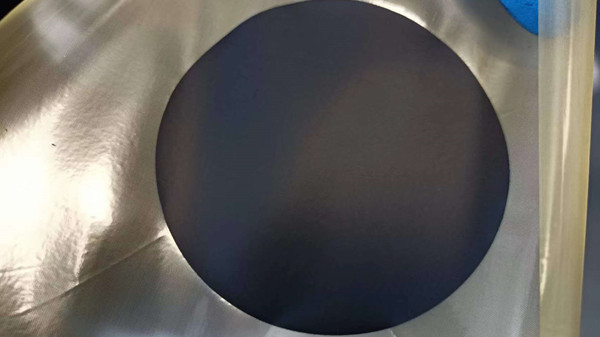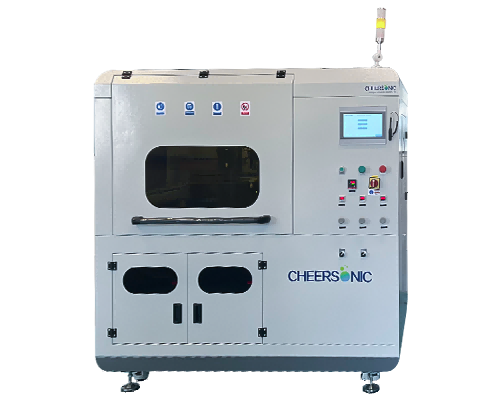Ultrasonic Spraying Ion Exchange Membrane
Ion exchange membrane: technical analysis and innovative application of ultrasonic spraying
In the frontier field of modern materials science and chemical technology, ion exchange membrane has become a key material that has attracted much attention due to its unique performance and wide application. Ion exchange membrane, as a polymer membrane containing ionic groups and having the ability to selectively permeate ions in solution, is also called ion selective permeable membrane because it mainly plays the role of ion selective permeability in practical applications. In 1950, W. Juda first successfully synthesized ion exchange membrane and successfully applied it to electrodialysis desalination process for the first time in 1956, opening the precedent for large-scale application of ion exchange membrane in the industrial field.
Rich types, each with its own merits
Based on the differences in function and structure, ion exchange membrane can be divided into five main types: cation exchange membrane, anion exchange membrane, amphoteric exchange membrane, mosaic ion exchange membrane, and polyelectrolyte complex membrane. From the structural level, ion exchange membrane is similar to ion exchange resin, but it is in the form of membrane. This unique structure gives ion exchange membrane the basis for playing a key role in different application scenarios. For example, cation exchange membranes mainly allow cations to pass through, and are indispensable in some processes that require separation or enrichment of specific cations; anion exchange membranes, on the contrary, are very useful in treating solutions containing specific anions; amphoteric exchange membranes, because they have both cation and anion exchange functional groups, show unique advantages in some systems that require more complex ion selectivity.

Multiple preparations, each showing its magical power
Ion exchange membranes are mainly divided into two categories: homogeneous membranes and heterogeneous membranes, and their preparation can be achieved by a variety of polymer processing and molding methods.
Homogeneous membrane preparation process
The preparation methods of homogeneous membranes are quite diverse. One common method is to first select polymer materials such as styrene-butadiene rubber, cellulose derivatives, polytrifluorochloroethylene, polyvinylidene fluoride, and polyacrylonitrile to make a membrane, and then introduce monomers such as styrene and methyl methacrylate to form a polymer through polymerization reaction in the membrane, and finally introduce the required functional groups through specific chemical reactions, thereby giving the membrane a specific ion exchange capacity. Another method is more direct, and a homogeneous membrane is obtained by direct polymerization of monomers such as formaldehyde, phenol, and phenolsulfonic acid. Homogeneous membranes have relatively good electrochemical properties, which makes them perform well in some application scenarios that require high ion conduction efficiency. For example, in the application of high-performance fuel cell membranes, homogeneous membranes can effectively promote ion conduction and improve battery performance. However, the mechanical properties of homogeneous membranes are relatively weak. In actual use, they often need to be reinforced with other fiber materials to improve their mechanical strength and durability.
Heterogeneous membrane preparation process
The preparation of heterogeneous membranes is to fully mix ion exchange resins with a particle size of 200-400 mesh with common film-forming polymer materials such as polyethylene, polyvinyl chloride, polyvinyl alcohol, fluororubber, etc., and then process them into membranes. Compared with homogeneous membranes, heterogeneous membranes have slightly inferior electrochemical properties, but perform better in mechanical properties. However, due to the relatively weak bonding force between the hydrophobic polymer film-forming material and the hydrophilic ion exchange resin, gaps often appear inside the membrane, which will have a certain impact on the ion selectivity, resulting in its performance in ion selectivity not as ideal as that of homogeneous membranes. Whether homogeneous or heterogeneous membranes, they all have a common characteristic, that is, they are easy to lose water and dry in the air, which makes the membrane brittle or even cracked. Therefore, they must be placed in water during storage to maintain the performance and structural integrity of the membrane.
Performance indicators, key considerations
The membrane resistance and selective permeability of ion exchange membranes are important indicators to measure their electrochemical performance. In the process of cations passing through the cation membrane, there is a specific permeability order: Li>Na>NH4>K>Rb>Cs>Ag>Tl>UO 卂>Mg>Zn>Co>Cd>Ni>Ca>Sr>Pb>Ba . For anions, the permeability order in the anion membrane is: F>CH3COO>HCOO>Cl>SCN>Br>CrO 娸>NO 婣>I>(COO) 卆 (oxalate)>SO 娸 . The membrane resistance is closely related to the mobility of ions in the membrane. According to different measurement and calculation methods, it can be divided into volume resistance and surface resistance. In addition, the permeability of water in the membrane is also a key performance indicator, which reflects the amount of water carried by ions when they pass through the membrane. In practical applications, the size of the water permeability directly affects the amount of water loss during electrodialysis. Generally speaking, the water permeability of hydrophobic polymer membranes is much lower than that of hydrophilic polymer membranes.
Widely used, broad prospects
The application field of ion exchange membranes is extremely wide. In water treatment, it can be assembled into an electroosmosis device for the desalination of brackish water and the concentration of salt solutions, and its desalination degree can even reach the purity of once distilled water. In the chemical industry, it can be used for the desalination of glycerol and polyethylene glycol, as well as the separation of various ions from radioactive elements and isotopes, and can also grade and separate amino acids. In addition, ion exchange membranes play an irreplaceable and important role in the purification of organic and inorganic compounds, the treatment of radioactive waste liquids and the preparation of nuclear fuels in the atomic energy industry, as well as fuel cell diaphragms and ion-selective electrodes. In the field of membrane technology, ion exchange membranes occupy a pivotal position and will also play an important role in promoting the research of bionic membranes.
Ultrasonic spraying: empowering ion exchange membranes to take a new leap
In the process of preparing and optimizing the performance of ion exchange membranes, ultrasonic spraying technology has shown significant advantages.
Optimizing membrane surface structure
In the process of preparing homogeneous and heterogeneous membranes, ultrasonic spraying can accurately spray a layer of nanomaterials with specific functions on the membrane surface. The high-frequency vibration of ultrasound enables the spraying material to cover the membrane surface in an extremely fine and uniform particle state. For homogeneous membranes, this helps to improve the microstructure of its surface, further improve the uniformity of ion conduction channels, reduce membrane resistance, and thus improve ion conduction efficiency. For example, in the preparation of fuel cell diaphragms, by spraying a layer of nanoscale proton conduction material, the conduction ability of protons in the membrane can be significantly enhanced, improving the performance of fuel cells. For heterogeneous membranes, ultrasonic spraying can effectively fill the gaps inside the membrane caused by insufficient bonding between polymer materials and ion exchange resins, and improve the ion selective permeability of the membrane. By spraying a layer of sealing material evenly on the membrane surface, the non-selective permeation path of ions can be effectively blocked, so that ions can only selectively permeate through the ion exchange groups of the membrane, thereby improving the ion selectivity of the membrane.
Enhance the stability of membrane performance
In actual application, ion exchange membranes often face challenges in various complex environments, such as temperature, humidity, chemical corrosion, etc. Ultrasonic spraying can form a protective coating on the membrane surface to enhance the performance stability of the membrane. For example, in some ion exchange membrane application scenarios that need to operate in a high-temperature environment, by spraying a layer of high-temperature resistant and anti-oxidation coating, the membrane material can be effectively protected from the influence of high-temperature oxidation and the service life of the membrane can be extended. In a high-humidity environment, spraying a layer of waterproof and moisture-proof coating can prevent the membrane from degrading due to excessive water absorption. In addition, for some ion exchange membrane applications that are susceptible to chemical corrosion, such as applications in chemical wastewater treatment, by spraying a layer of corrosion-resistant coating, the membrane’s resistance to chemical corrosion can be significantly improved, ensuring the normal operation of the membrane in harsh chemical environments.
Improving the compatibility of membranes with other components
In many practical applications, ion exchange membranes need to work with other components, such as electrodes in electrodialysis devices. Ultrasonic spraying can spray an interface layer with specific functions on the surface of the membrane to improve the compatibility between the membrane and other components. By spraying a layer of interface layer material with good conductivity and adhesion, the electronic conduction and physical connection between the membrane and the electrode can be enhanced, the contact resistance can be reduced, and the operating efficiency of the entire electrodialysis device can be improved. At the same time, this interface layer can also play a buffering role, reduce stress concentration caused by factors such as differences in thermal expansion coefficients between different components, and improve the stability and reliability of the entire system.
In summary, ion exchange membranes, as a key functional material, play an important role in many fields. The introduction of ultrasonic spraying technology provides a new way to optimize the performance and expand the application of ion exchange membranes, and is expected to promote technological breakthroughs and innovative applications of ion exchange membranes in more fields, and further enhance their value in the development of modern industry and science and technology.
About Cheersonic
Cheersonic is the leading developer and manufacturer of ultrasonic coating systems for applying precise, thin film coatings to protect, strengthen or smooth surfaces on parts and components for the microelectronics/electronics, alternative energy, medical and industrial markets, including specialized glass applications in construction and automotive.
Our coating solutions are environmentally-friendly, efficient and highly reliable, and enable dramatic reductions in overspray, savings in raw material, water and energy usage and provide improved process repeatability, transfer efficiency, high uniformity and reduced emissions.
Chinese Website: Cheersonic Provides Professional Coating Solutions


